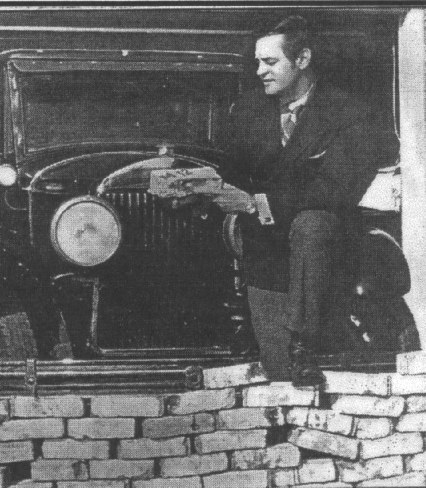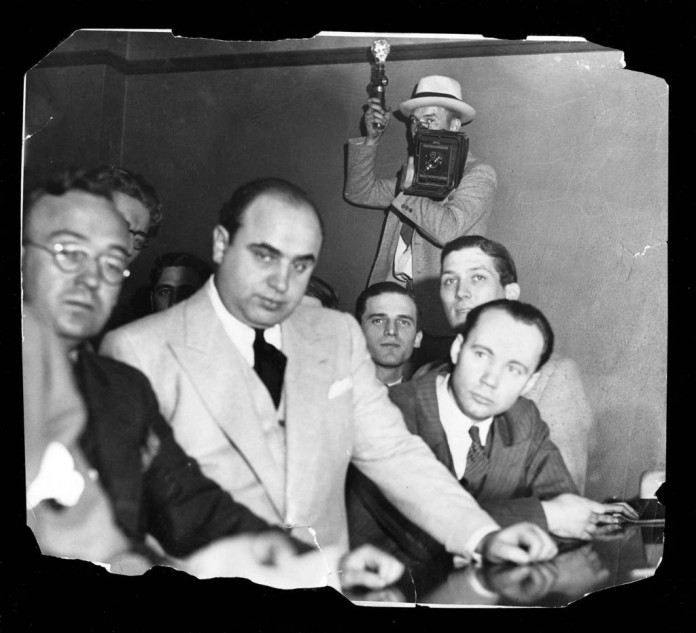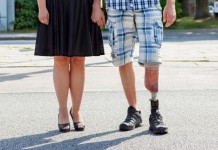Not Just Another Brick In The Wall
Superstition said that they brought about financial ruin and bad luck to anyone who dared to buy them.
 The garage at 2122 N. Clark Street, was demolished in 1967; the site where it once stood is now a landscaped parking lot for a nursing home. But the bricks from the North wall got around.
The garage at 2122 N. Clark Street, was demolished in 1967; the site where it once stood is now a landscaped parking lot for a nursing home. But the bricks from the North wall got around.
They were purchased and saved by Canadian businessman George Patey in 1967. His original intention was to use them in a restaurant that he represented, but the restaurant’s owner flatly refused.
Not one to give up easily, Patey bought the bricks himself, outbidding three or four others interested parties. Patey had the wall taken apart and each of the 414 bricks numbered, and then had them shipped to Canada.
[one_fourth]
[/one_fourth][three_fourth_last]In 1971, Patey opened a nightclub called the Banjo Palace in Vancouver that had a 1920’s theme, and the famous bricks were installed inside the men’s washroom with a Plexiglass shield, so that patrons could urinate and try to hit the targets painted on the Plexiglass. The bricks were placed in storage until 1997 when Patey tried to auction them on a website called Jet Set On The Net.
The deal fell through after a disagreement with the auction company. In 1978, Patey reassembled the wall and put it on display in a wax museum as a backdrop for gun-wielding gangsters shooting each other to the accompaniment of recorded gunshot sounds, but the wax museum ended up going bankrupt.
In 1999, Patey tried to sell them brick by brick on his own website and sold about one hundred to gangster buffs. These came with signed certificates by Patey.
Patey died December 26, 2004, having never revealed how much he paid for the bricks at auction. The remaining bricks of his massacre wall were given as an inheritance to his niece who sold them to the Mob Museum in Las Vegas, which opened February 14, 2012. While the wall is no longer complete because of Patey’s sale of some bricks, it still remains the original






